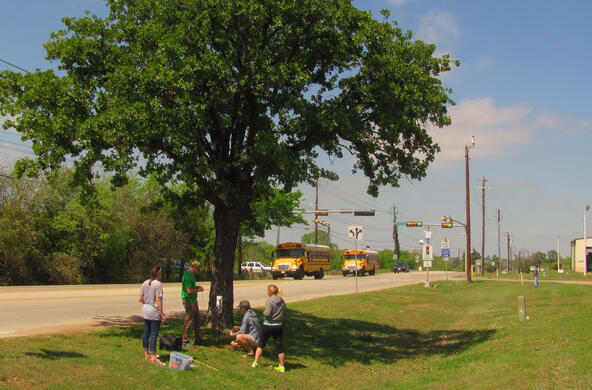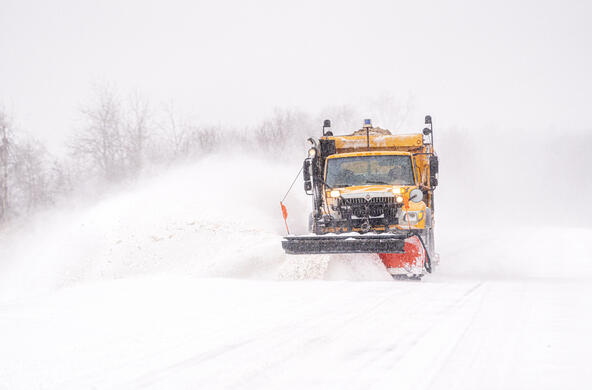As the world’s nations embrace a low-carbon future, it is easy to envision renewed interest in the nuclear option. After all, nuclear power produces no CO2 emissions beyond those associated with the construction of power plants. And, nuclear power is not burdened with the indirect health effects associated with the mining and combustion of coal for electricity. Nuclear power doesn’t destroy any mountain tops in West Virginia. Nevertheless, we should be cautious in our optimism for the nuclear option.
We’ve seen three big examples of the dangers of nuclear power—the meltdowns at Three Mile Island, Chernobyl, and Fukushima. The 1986 disaster at Chernobyl left about 1,000 square miles of land uninhabitable by humans for the foreseeable future, leaving dangerous levels of plutonium-239 in the soil. Imagine the same for a nuclear power plant near you. For central North Carolina, this would involve the exposure of two million people and the instantaneous and permanent abandonment of the campuses of Duke, NC State, and UNC. The half life of plutonium-239 is 24,000 years.
The half-life of some of the other radioactive elements released at Chernobyl, such as cesium-137 and strontium-90, is about 30 years. Unfortunately, the contamination of the environment by these isotopes was more widespread, in part because they are lighter and more easily carried by winds and water. Cesium-137 was transported in the atmosphere and deposited in the United Kingdom, where dangerous levels may persist in the soil for more than 100 years. Levels of cesium in some sheep, which fed on grasses in contaminated soils, are above the standards for human consumption.
The half-life of a radioactive element says only when half of the original content has decayed away. If the original contamination was large, even half can be significant. We should not associate a half-life of 30 years with a return to safety at Chernobyl. It is the absolute remaining levels that count.
Higher incidence of thyroid cancer and genetic irregularities are reported from the human populations around Chernobyl. Nuclear advocates are quick to point out that some wildlife populations in the exclusion zone have increased dramatically—perhaps as a result of relaxation of hunting and other human pressures after 1986. But, the higher incidence of albinism in resident barn swallows should be a constant reminder that radiation-induced genetic mutations afflict wildlife populations and potentially humans as well. All life is exposed to some natural level of radiation, even from cosmic rays from the sun, but low levels of additional radiation are associated with increased genetic damage in humans.
Severe contamination of the local environment resulted from the disaster at Fukushima. It is unclear that some areas will ever be inhabited again. Again, some of the more mobile radioactive elements have been carried to distant lands. Within a month, elevated levels of iodine-131 and cesium-137 were recorded in rainfall collected by National Atmospheric Deposition Program (NADP) stations across the U.S. Iodine-129 (half-life of 15.7 million years) was carried through the atmosphere to British Columbia, and cesium-134 through ocean currents reaching the west coast of North America. By the time they reached North America, the levels of these isotopes were lower than the amounts naturally found in most soils. We know that fallout spreads worldwide, but the worst effects of a nuclear disaster are normally found in the region around the event itself.
With nuclear power comes the associated problems of its waste disposal, which have yet to be addressed effectively in the United States. And a proliferation of nuclear power also enhances the likelihood that nuclear materials will be diverted to nefarious purposes, such as the production of a “dirty bomb” by terrorists. When all the hidden costs are included, nuclear power is not competitive with many sources of renewable energy, such as wind power.
Nuclear power may appear to be clean—we see no equivalent of black-lung disease among coal miners, no mercury accumulations in fishes downwind, and no CO2 emissions that change our climate globally. But, when there is a problem with nuclear power, it is sure to be large, persistent, and biocidal for the persistence of life on Earth. Accidents always happen; can we afford an accident with nuclear power?
References
Deryabina, T.G., S.V. Kuchmel, L.L. Nagorskaya, T.G. Hinton, J.C. Beasley, A. Lerebours, and J.T. Smith. 2015. Long-term census data reveal abundant wildlife populations at Chernobyl. Current Biology 25: R824-R826.
Hasegawa, A., K. Tanigawa, A. Ohtsuru, H. Yabe, M. Maeda, J. Shigemura, T. Ohira, T. Tominaga, M. Akashi, N Hirohashi et al. 2015. Health effects of radiation and other health problems in the aftermath of nuclear accidents, with an emphasis on Fukushima. Lancet 386: 479-488.
Herod, M.N., M. Sucby, R.J. Cornett, W.F. Kieser, I.D. Clark, and G. Graham. 2015. The atmospheric transport of iodine-129 from Fukushima to British Columbia, Canada, and its deposition and transport into groundwater. Water Resources Research doi: 10.1002/2015WR017325
Kamiya, K., K. Ozasa, S. Akiba, N.Ohstura, K. Kodama, N. Takamura, E.K. Zaharieva, Y. Kimura and R. Wakeford. 2015. Long-term effects of radiation exposure on health. Lancet 386: 469-478.
Moller, A.P. and T.A. Mousseau. 2006. Biological consequences of Chernobyl: 20 years on. Trends in Ecology and Evolution 21: 200-207.
Moller, A.P. and T.A. Mousseau. 2015. Strong effects of ionizing radiation from Chernobyl on mutation rates. Scientific Reports 5: doi: 10.1038/srep08363
Smith, J.T., R.N.J. Comans, N.A. Beresford, S.M. Wright, B.J. Howard, W.C. Camplin. 2000. Chernobyl’s legacy in food and water. Nature 405: 141.
Yoshida, S., A.M. Macdonald, S.R. Jayne, I.I. Rypina and K.O. Buesseler. 2015. Observed eastward progression of the Fukushima Cs-134 signal across the North Pacific. Geophysical Research Letters 41: 7139-7147.
Wetherbee, G.A., D.A. Gay, T.M. Debey, C.M.B. Lehmann, and M.A. Nilles. 2012. We deposition of fission-product isotopes to North America from the Fukushima Dai-ichi incident, March 2011. Environmental Science and Technology 46 (5), pp 2574–2582








